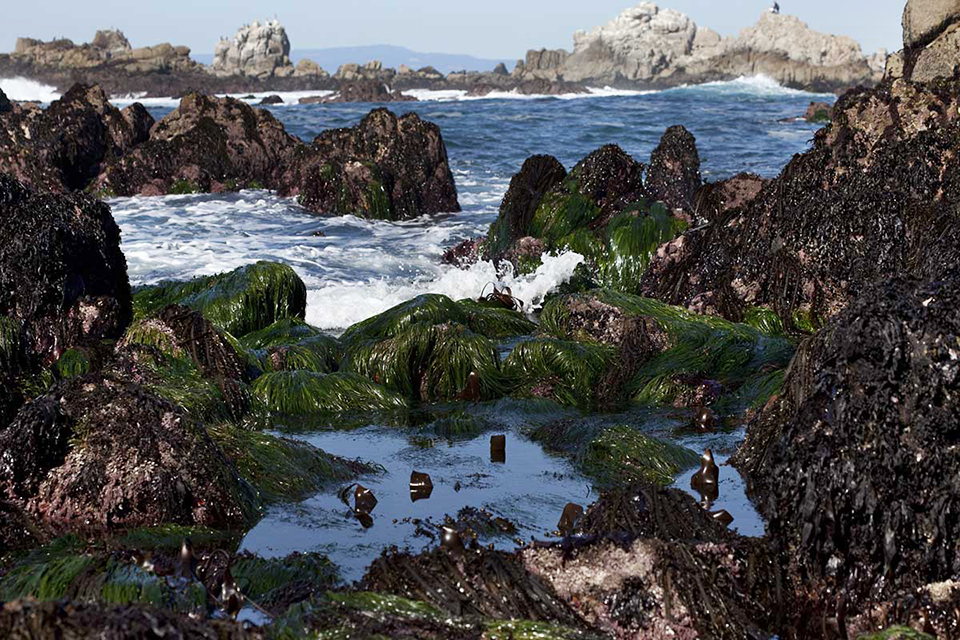
..............................................................................................................................................................
Intertidal zone
What
is the intertidal zone?
The
National Ocean Service
The intertidal zone is the
area where the ocean meets the land between high and low
tides.
Intertidal
zones exist anywhere the ocean meets the land, from steep, rocky ledges to long, sloping
sandy beaches and mudflats that
can extend for hundreds of meters.
Four
physical divisions, each with distinct characteristics and ecological
differences, divide the intertidal zone. They are the:
· Spray
zone: dampened by ocean spray and high waves and is submerged only during
very high tides or severe storms.
· High
intertidal zone: floods during the peaks of daily high tides but remains
dry for long stretches between high tides. It is inhabited by hardy sea life
that can withstand pounding waves, such as barnacles, marine snails, mussels, limpets, shore crabs, and hermit crabs.
· Middle
intertidal zone: over which the tides ebb and flow twice a day, and which
is inhabited by a greater variety of both plants and animals, including sea stars and anemones.
· Low
intertidal zone: virtually always underwater except during the lowest
of spring tides. Life is more abundant there because
of the protection provided by the water.
Sea
creatures arrange themselves vertically in the intertidal zone depending on
their abilities to compete for space, avoid predators from above and below, and
resist drying out.
Residents
of the higher intertidal zones can either close themselves up in their shells
to remain moist and ward off predators, or are mobile enough to retreat to a
submerged zone when the tide goes out.
In the
lower parts of the intertidal zone, many plants and animals attach themselves
in place and are very sturdy, very flexible, or otherwise well suited to stand
up to wave energy.
Larger
marine life, such as seals, sea lions, and fish, find foraging for food ideal
at high tide in the intertidal zone, while a large variety of shorebirds,
looking for their meals, stroll hungrily over the intertidal zone at low tide.
Take only photographs and leave only footprints! Empty shells are recycled and reused
by animals such as hermit crabs. Seaweed tossed on the shore decomposes and
recycles nutrients back into the marine ecosystem.
The
National Ocean Service
provides data, tools, and services that support coastal economies and their
contribution to the national economy.
Our
mission is to provide science-based solutions through collaborative
partnerships to address evolving economic, environmental, and social pressures
on our ocean and coasts.


No comments:
Post a Comment